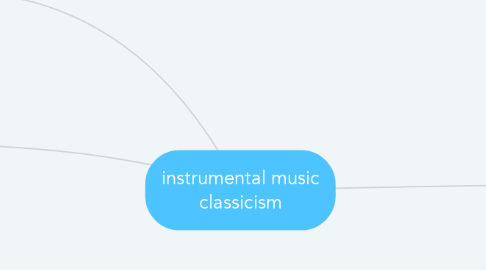
1. Music
1.1. Sonata
1.1.1. Main composition model
1.1.2. Form
1.1.2.1. Exposition
1.1.2.1.1. 1st theme (tonic)
1.1.2.1.2. Transition
1.1.2.1.3. 2nd theme (dominant)
1.1.2.1.4. Codeta
1.1.2.2. Development
1.1.2.2.1. Modulation
1.1.2.3. Recapitulation
1.1.2.3.1. 1st theme (tonic)
1.1.2.3.2. Retransition
1.1.2.3.3. 2nd theme (tonic)
1.1.2.3.4. Coda
1.2. Symphony
1.2.1. Orchestra
1.2.2. 4 movements
1.2.2.1. Slow
1.2.2.1.1. Binary
1.2.2.1.2. Ternary
1.2.2.1.3. Variations
1.2.2.1.4. Sonata
1.2.2.2. Fast
1.2.2.2.1. Sonata
1.2.2.3. Calm or fast
1.2.2.3.1. Minueto
1.2.2.3.2. Scherzo
1.2.2.4. Fast or very fast
1.2.2.4.1. Rondo
1.2.2.4.2. Variations
1.2.2.4.3. Sonata
1.2.3. Concerto
1.2.3.1. Orchesta
1.2.3.2. Movements
1.2.3.2.1. 1st fast
1.2.3.2.2. 2nd Slow
1.2.3.2.3. 3rd fast or very fast
2. Dance
2.1. Ballet
2.1.1. Music
2.1.1.1. 1 Idea without words
2.1.2. coreography
2.2. Most popular
2.2.1. Minuet
3. Characteristics
3.1. Chamber music
3.1.1. small group of instruments
3.1.2. designed to play in palaces, rooms...
3.1.3. Most important: string quartet
3.1.3.1. viola
3.1.3.2. violoncello
3.1.3.3. 2 violins
3.2. Basso continuo was eleminated
3.3. Orchestra grew
3.3.1. More string instruments
3.3.2. More wind instruments
3.3.3. A conductor was needed
3.4. Instruments
3.4.1. international
3.4.1.1. piano
3.4.1.2. clarinet
3.4.2. Spain
3.4.2.1. Guitar
3.5. Where?
3.5.1. public concert halls

